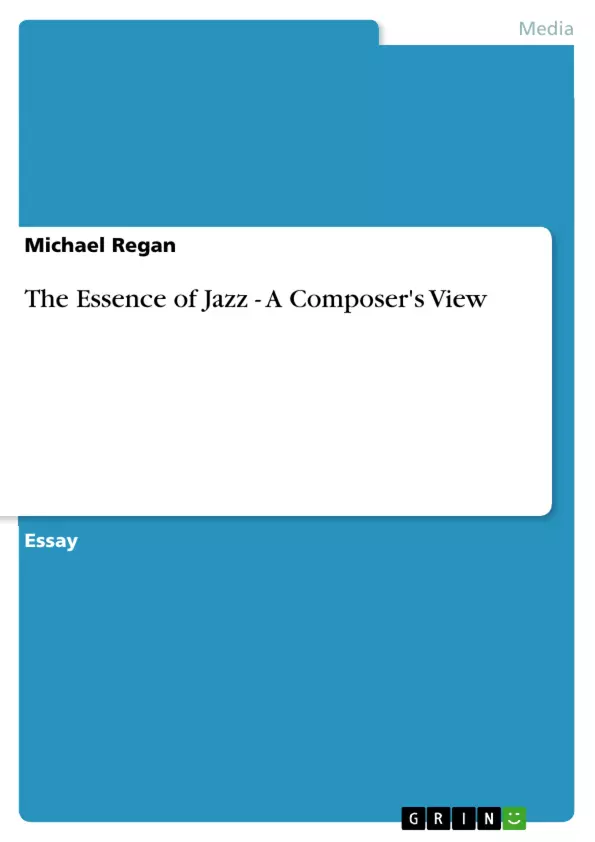In this brief survey I do not want to go much into the thorny problems of the origins of jazz, or of whether it is European or African or both. Those questions have been exhaustively dealt with by scores of earlier commentators, without definite unassailable answers ever being produced.
There seem to be as many views on this subject as there are jazz experts ready to expound on them. All that I will say is that to me, jazz does not sound either European or African, but seems to be American in its sonorities, its harmonic language, and its treatment of rhythm. In the same way that America assimilated cultural influences from both Europe and elsewhere to produce a distinctive style in its architecture, its language and its art, so it blended disparate musical elements to produce a quintessentially American music- i.e. what we now call Jazz.
- Quote paper
- Michael Regan (Author), 2011, The Essence of Jazz - A Composer's View, Munich, GRIN Verlag, https://www.grin.com/document/172301



